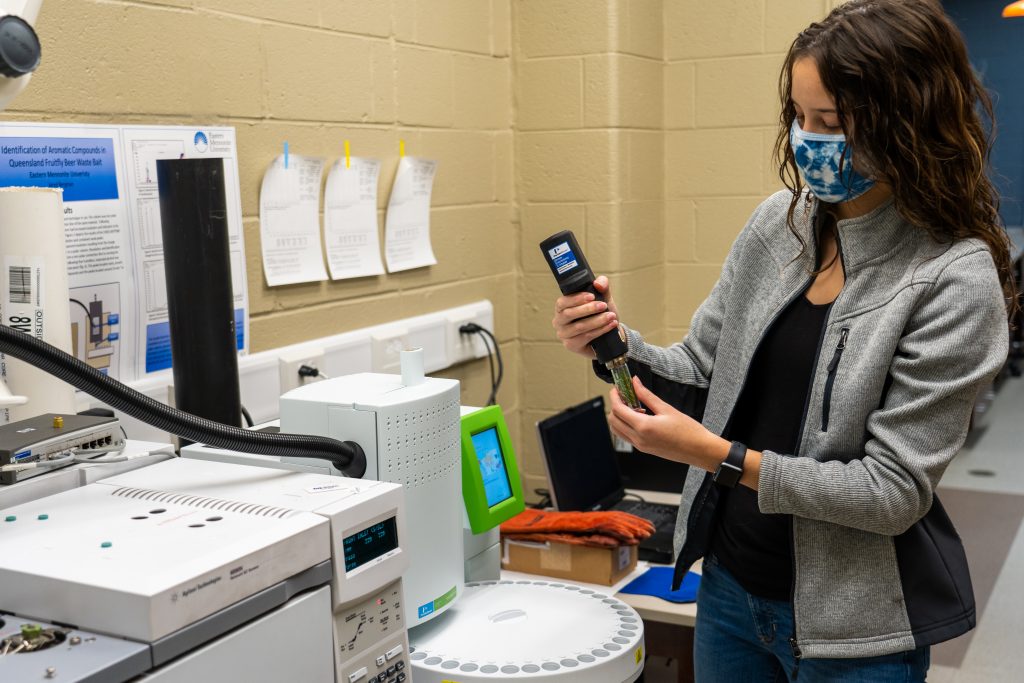Have you ever crushed the needles of a spruce or pine tree between your fingers and inhaled the crisp refreshing scent? The smell is created by the release of volatile organic compounds, which are a kind of chemical “footprint” that trees use to communicate, defend themselves and otherwise react to stressors.
A team of Eastern Mennonite University students and professors has piloted a new, efficient analytical process to speedily analyze these volatiles, which has implications for forest management and climate change modelling, among other applications.
Their peer-reviewed research using headspace gas chromatography/mass spectrometry was published this month in the international journal Phytochemistry.

The team analyzed volatiles from samples taken from blue and Norway spruce and cedar of Lebanon trees around campus while under different environmental conditions.
“We developed a technique for analysis and then were able to differentiate species based on their ‘fingerprint,’ or chemical profile,” said Alex Raber, a senior biology major who is the first author on the paper.
Raber, who has been accepted to medical school next fall, has worked on the research for the past three years. Senior Reuben Peachey-Stoner and professors Steve Cessna and Matt Siderhurst are co-authors.
Raber began working on the project with Cessna during her second year at EMU. “I essentially walked into his office and asked if there was any research I could be part of,” she said. “This project started with Steve and eventually included Matt.”
One of Cessna’s research interests is plant physiology, specifically how plants react to stresses. Siderhurst brought expertise with instrumentation and compound analysis to the project, which eventually expanded from including data from just two spruce trees to 23 total trees from three species over a study period stretching from September through April.
“This was an exciting research collaboration for all of us,” Siderhurst said. “Steve provided the big-picture vision for this project. Alex and I worked on developing the techniques and then we go back to Steve and say ‘Here’s what we found. What’s next?’ We worked with the how and Steve is driving the why.”
Peachey-Stoner, a senior chemistry major, joined the research team in the latter stages of the project through an analytical chemistry class mini research project that expanded past the end of the course.
“Many of the pleasant-smelling spruce compounds analyzed have two very similar forms, analogous to how our right and left hands are similar but are mirror images of each other,” said Siderhurst. “These compounds can be difficult to separate but Reuben was successful in this endeavor and found further differences between the tree species using this analysis.”
Raber presented some of the research at a poster session during the American Chemical Society conference in fall 2019.
She said the opportunity to participate in and publish research definitely helped her aspirations to attend medical school.
“My interviewers [during the medical school application process] were pretty impressed that I had done something like this as an undergraduate,” she said.


Congratulations to all of you. Nice work.
Kudos to this team for researching an intriguing new field of Phytochemistry. We are still on the cusp, and have much to learn about forests and plant communities. Carry on!!